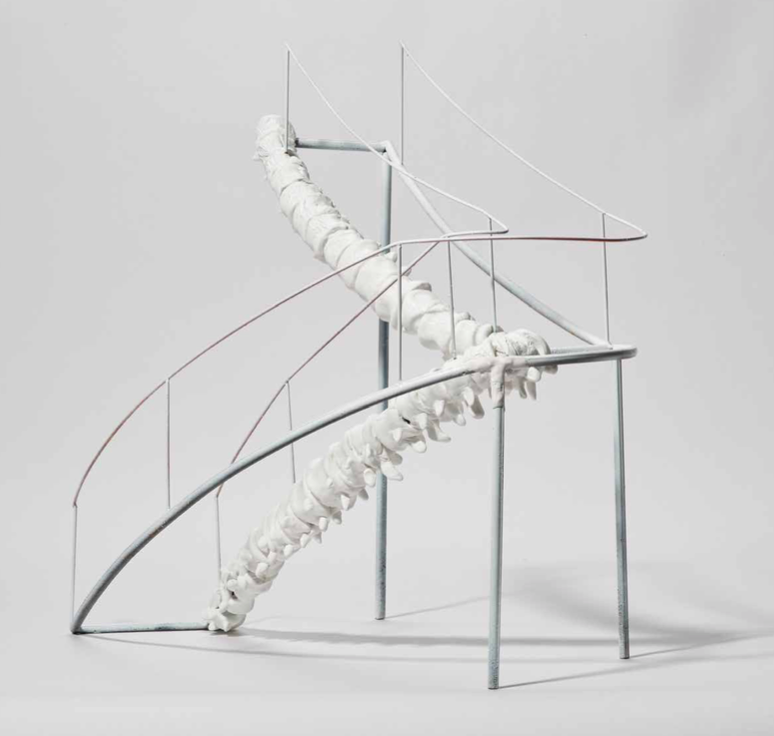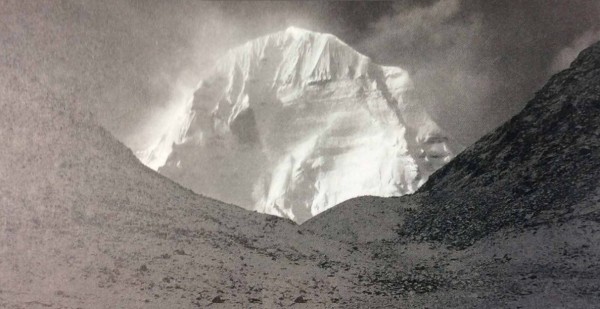Art World
Zhang Huan Creates a Skull Sculpture For Shanghai Jewelry Store to Outdo Damien Hirst
His inspiration comes from Tibetan Buddhism and Mount Kailash.

His inspiration comes from Tibetan Buddhism and Mount Kailash.

Sam Gaskin

Chinese contemporary artist Zhang Huan has installed an outsize model of a section of a skull—with the crown of the head from the eye sockets up— across both floors of a new jewelry store in Shanghai. The store, an 800-square-meter space on Shanghai’s Middle Huaihai Road, is called I Do | Huan Art and Life Space. Other design elements that Zhang has created for the store include a spine-inspired staircase and an internal room that resembles the tectum, the region of the brain responsible for auditory and visual reflexes.
Zhang’s installation is reminiscent of other anatomical architecture including the Czech Republic’s Sedlec Ossuary, Antoni Gaudi’s Casa Batlló and H. R. Giger’s designs for the Alien movies, but Zhang arrived at the design from a wholly different cultural tradition. “My inspiration comes from Tibetan Buddhism and Mount Kailash,” Zhang told artnet News, “which is the soul of this project.”

Zhang Huan’s installation being built.
Mount Kailash, whose shape resembles the upper portion of a human skull, is a Tibetan peak that tops out at 6,638 meters (21,778 feet). Its name derives from the Sanskrit word for crystal, and it is said to be the home of Lord Shiva, destroyer of ignorance, and the Buddha Demchok who represents supreme bliss.
“The holy mountain turns into the shape of a human head after numerous times of samsara [karmic cycles of birth and death],” Zhang said. “So from the beginning, my idea was to use a brain case as architecture.”
Zhang thus makes a visit to the store a proxy pilgrimage to the mountain in pursuit of enlightenment, with the skull representing internal spiritual development. Kailash, Zhang said, “finally leads to the holy world for human souls, that is, Magic Paradise.”
This is a rather grand concept for a retail environment, both earnest and exasperating, like Damien Hirst’s diamond-covered skull “For the Love of God” (2007). But Zhang isn’t being ironic. If anything he is trying to outdo Hirst’s attempt at overdoing it. “Damien Hirst inlaid the skull all over with diamonds outside,” he said, “but I insert the diamond inside the skull and turn the diamond eternal in the brain.”

By situating diamonds in the brain instead of the heart, Zhang’s approach is subtly subversive, making the rocks representative of spiritual transcendence instead of the marriage-industrial complex and commoditized romance.
“I enjoy the idea and activity of installing the holy mountain into this noisy urban business,” he said. “I enjoy the research and practice of combining art with business. It is so cool to imagine the customers enter the space, step into the Magic Paradise freely, and feel their souls flying between the holy mountain and mortal world.”
Zhang has previously collaborated with brands including Audi, Diane Von Furstenburg and Italian wine label Ornellaia. Collaborations between artists and brands can be great or they can be terrible. According to Zhang, “Everything is related to time. When meeting with appreciated opportunity and karma, the collaboration will be successful naturally. All is doomed by fate.”
Zhang’s own style is understated—he wears caps and hoodies, not diamonds. Meeting the artist halfway, I DO produced a Zhang Huan, I DO baseball cap.
“I like to lead a simple life,” Zhang said. “I hope the public [will] come into this space in order to get the physical experience of making a pilgrimage to holy Mount Kailash, and achieve enlightenment. We should know that the everlasting rule of the world is to keep on changing. We see changes from eternal love to impermanent love, and changes from transmigration to the magic paradise.”